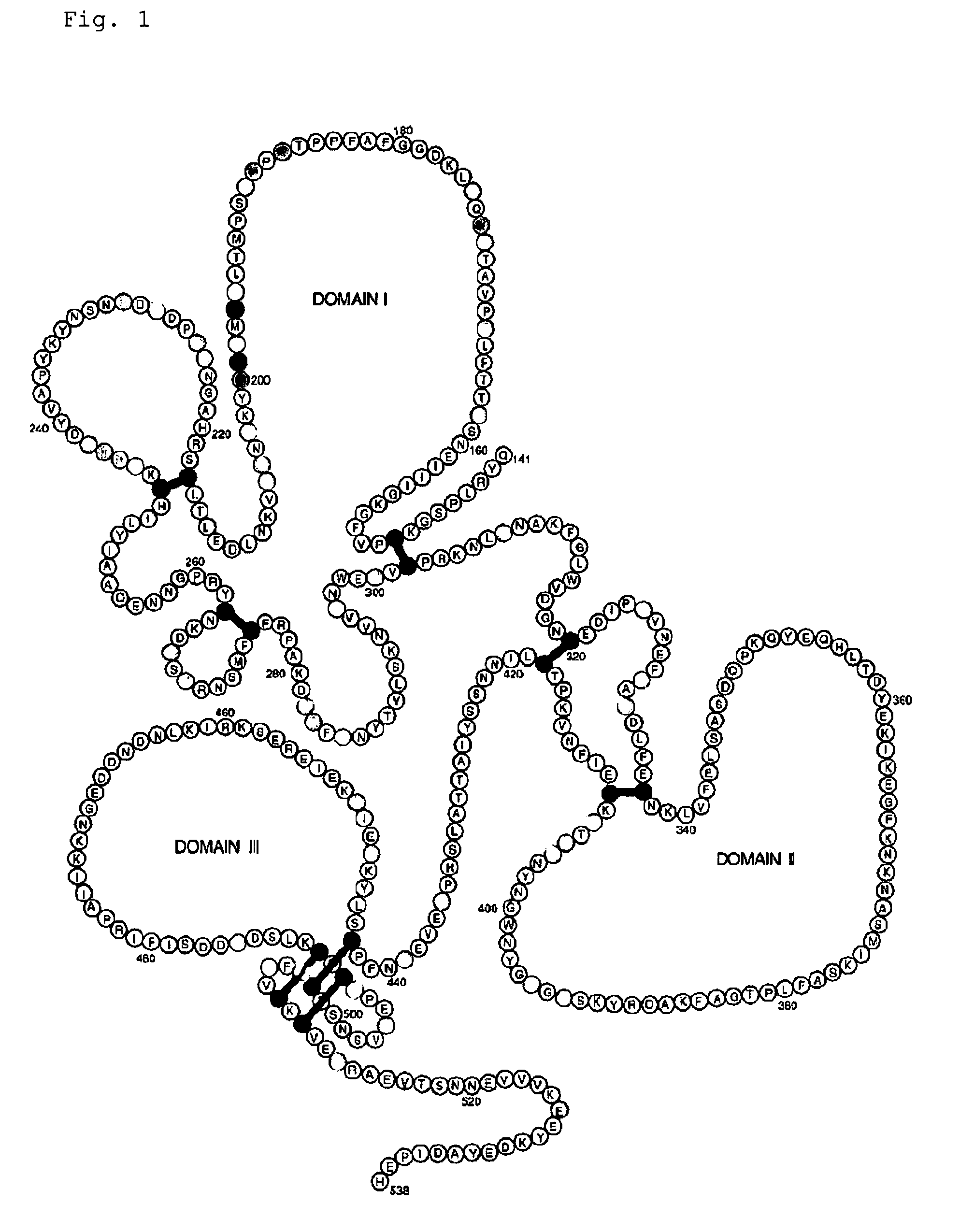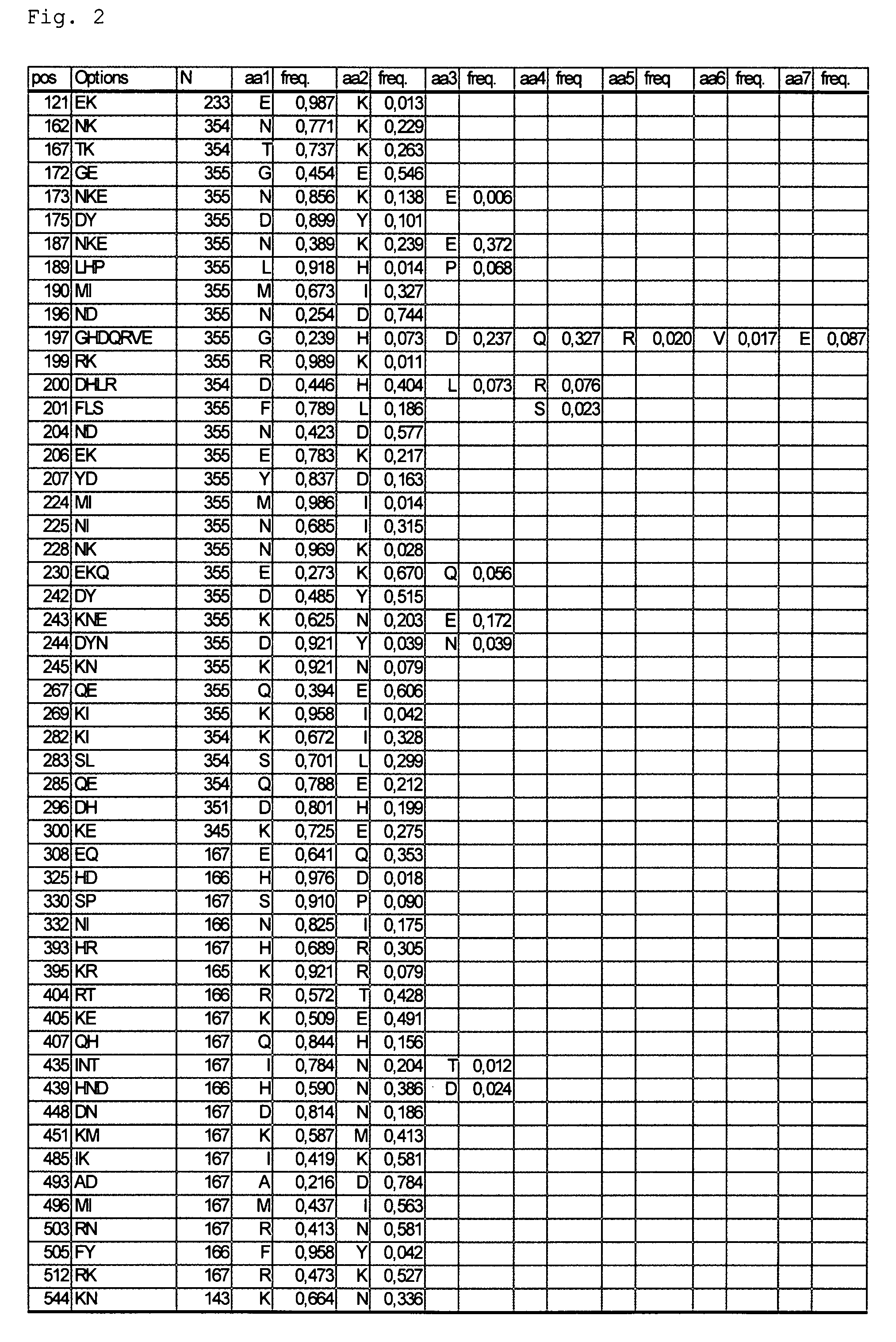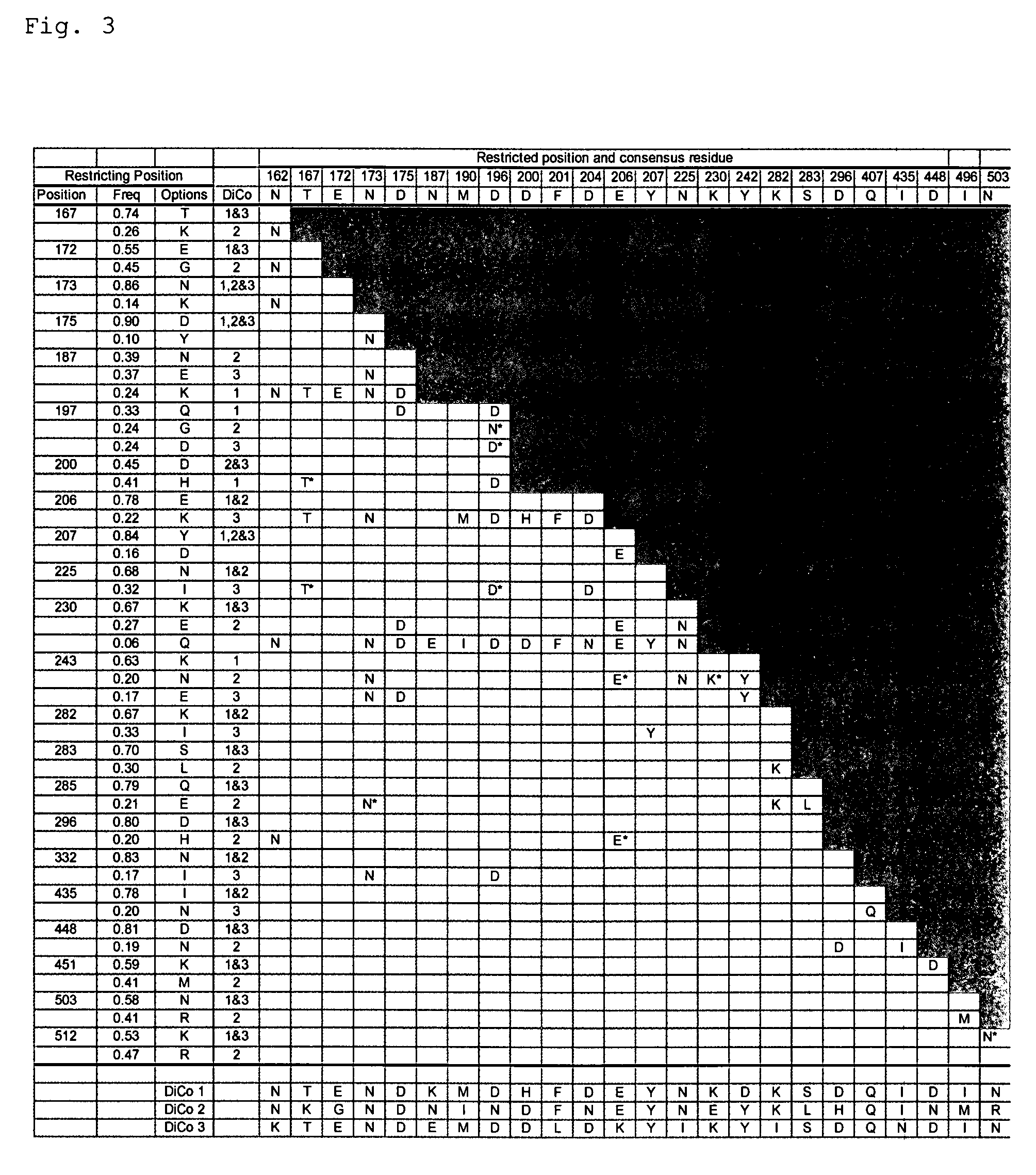Protein composition for inducing an immune response in a vertebrate comprising a plurality of protein variants covering the heterogeneity of a single antigen, AMA1
- Summary
- Abstract
- Description
- Claims
- Application Information
AI Technical Summary
Benefits of technology
Problems solved by technology
Method used
Image
Examples
Embodiment Construction
A Diversity-covering Approach to Immunisation with Plasmodium falciparum AMA1; Broader Allelic Recognition and Growth Inhibition
Summary
[0084]Plasmodium falciparum AMA1 (PfAMA1), a candidate malaria vaccine, is polymorphic. This polymorphism is believed to be generated predominantly under immune selection pressure, and as a result may compromise attempts at vaccination.
[0085]355 PfAMA1 sequences obtained predominantly from parasites in endemic areas were aligned and analysed and it was shown that about 10% of the 622 amino acid residues have potential to vary between alleles (FIG. 2). Linkages between polymorphic residues have also been identified (FIGS. 3 and 4). From this analysis three Diversity-Covering (DiCo) PfAMA1 sequences were generated that take account of linkages and when taken together incorporate 80% of all amino acid variability. For each of the three DiCo sequences a synthetic gene was constructed and used to transform the methylothrophic yeast Pichia pastoris, allowi...
PUM
| Property | Measurement | Unit |
|---|---|---|
| Fraction | aaaaa | aaaaa |
Abstract
Description
Claims
Application Information
 Login to View More
Login to View More - R&D
- Intellectual Property
- Life Sciences
- Materials
- Tech Scout
- Unparalleled Data Quality
- Higher Quality Content
- 60% Fewer Hallucinations
Browse by: Latest US Patents, China's latest patents, Technical Efficacy Thesaurus, Application Domain, Technology Topic, Popular Technical Reports.
© 2025 PatSnap. All rights reserved.Legal|Privacy policy|Modern Slavery Act Transparency Statement|Sitemap|About US| Contact US: help@patsnap.com



